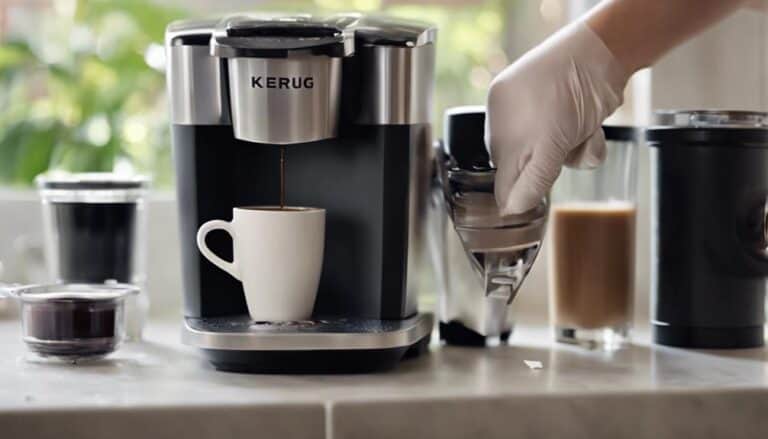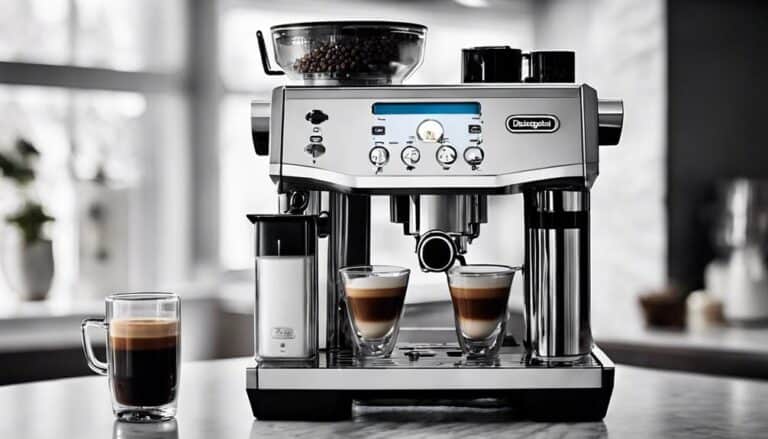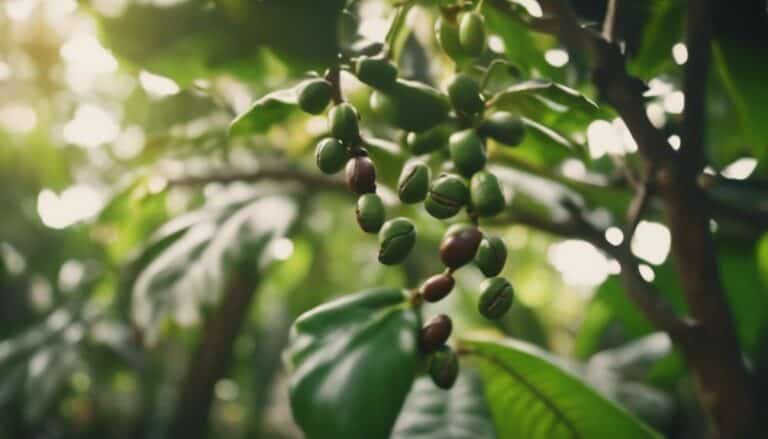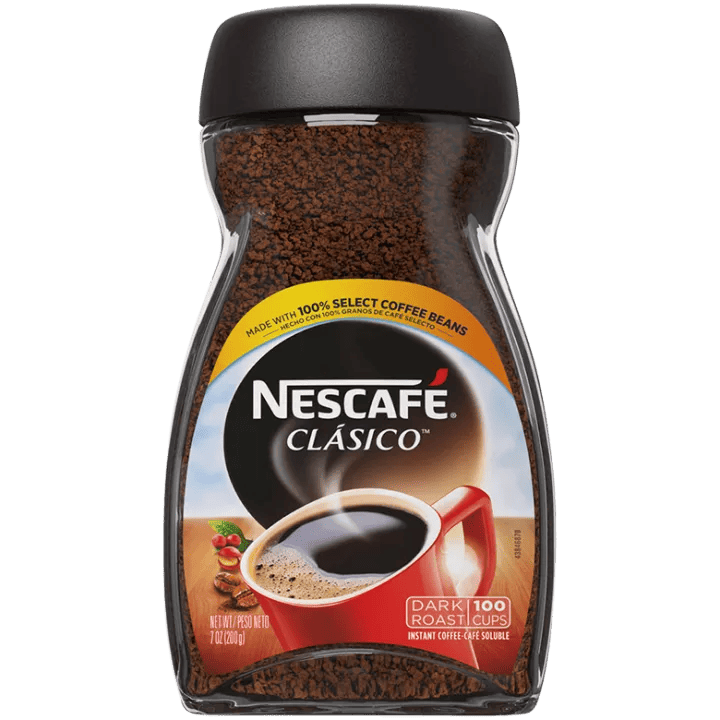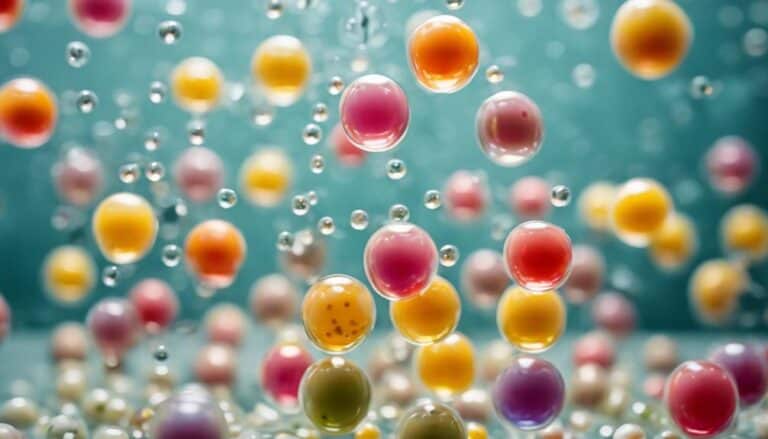What's the Difference Between Iced Latte and Iced Coffee?

As I stood in line at the café, pondering my order, the question arose: What's the difference between an iced latte and an iced coffee? A familiar dilemma for many coffee enthusiasts, the distinction between these chilled beverages goes beyond mere temperature. The nuances in brewing methods, ingredients, and flavor profiles hold the key to understanding why some opt for the velvety smoothness of an iced latte while others crave the robust kick of an iced coffee. The mystery awaits unraveling, shedding light on the intriguing world of chilled coffee concoctions.
Brewing Methods and Ingredients
When making an iced latte, the process involves combining espresso, milk, and ice to create an invigorating and creamy beverage. The key to a perfect iced latte lies in the balance between the rich espresso, creamy milk, and revitalizing ice.
Unlike iced coffee, which is made with brewed coffee, an iced latte requires the use of an espresso machine for that concentrated shot of coffee. The coffee to milk ratio in an iced latte is typically 1:3, resulting in a creamier texture that complements the bold espresso flavor.
Additionally, iced lattes offer the flexibility to experiment with flavoring syrups, allowing for a personalized touch to suit individual preferences. By using an espresso machine, the brewing method guarantees that each sip delivers a smooth and satisfying experience, while the milk adds a velvety texture that enhances the overall enjoyment.
This method opens up a world of possibilities, offering a variety of flavor profiles to cater to different tastes.
Flavor Profiles and Taste
The flavor profiles of iced lattes and iced coffees differ markedly, offering contrasting taste experiences to coffee enthusiasts. Iced lattes, known for their sweetness and creaminess, derive these qualities from their higher milk content compared to iced coffees. The addition of milk tones down the coffee taste, resulting in a smoother and more indulgent beverage. The type of milk used can further impact the flavor; almond or oat milk may introduce nutty or slightly sweet notes to the drink.
On the other hand, iced coffees typically showcase a stronger coffee taste with hints of bitterness and acidity, making them a favorite for those seeking a more robust flavor profile. The taste of iced coffees can be influenced by factors such as the coffee beans' roast level and any additional sugar or syrups added to the brew. This variety allows for a diverse range of taste experiences, catering to different preferences among coffee lovers.
Milk Ratio and Creaminess

Moving from the taste differences between iced lattes and iced coffees, the milk ratio plays a pivotal role in determining the creaminess of these popular coffee beverages. Iced lattes are known for their creamy texture due to a higher milk content, typically following a 1:3 ratio of espresso to milk.
In contrast, iced coffees usually contain little to no milk, resulting in a lighter and less creamy consistency. The milk in iced lattes contributes to a smoother and richer mouthfeel compared to the more straightforward coffee flavor of iced coffee.
The creaminess of iced lattes stems from the milk-to-espresso ratio, offering a balanced and mellow taste profile. Additionally, the milk ratio in iced lattes is adjustable to cater to individual preferences for creaminess and overall flavor. This adjustment allows coffee enthusiasts to fine-tune their beverage to achieve the desired level of creaminess, enhancing their coffee experience.
Caffeine Content Comparison
Comparing the caffeine content between iced lattes and iced coffees reveals notable differences in their energizing properties. Iced lattes typically contain approximately 75 mg of caffeine derived from espresso shots, whereas iced coffees boast about 95 mg of caffeine sourced from brewed coffee. However, it's crucial to note that the caffeine levels in both drinks can be influenced by the brewing method. Techniques like cold brew or French press may alter the final caffeine content in these beverages.
Furthermore, the taste profiles of iced lattes and iced coffees differ significantly. Iced lattes offer a mellow and creamy flavor due to the balance of milk, providing a smoother experience. On the other hand, iced coffees tend to be more bitter and acidic, showcasing the robust flavors of the brewed coffee. Additionally, the choice of coffee bean roast can impact caffeine levels and taste, resulting in varying experiences for the consumers.
Customization and Variations

Delving into the world of customization and variations in iced lattes and iced coffees reveals a plethora of exciting options to tailor your coffee indulgence. When it comes to iced lattes, you can choose from a variety of milk types like almond, soy, or oat milk, catering to different dietary preferences.
On the other hand, iced coffee offers a range of flavor syrups such as vanilla, caramel, or hazelnut, adding a delightful twist to your beverage. Whether you prefer classic syrup or opt for sugar substitutes like stevia or monk fruit, both iced lattes and iced coffee can accommodate different sweetener choices.
Additionally, enhancing your drink with toppings like whipped cream, chocolate shavings, or cinnamon can elevate the flavor profile. Adjusting the coffee strength and ratios allows for a personalized experience, ensuring that your coffee is crafted just the way you like it.
In the domain of iced lattes and iced coffee, customization truly knows no bounds, catering to every individual's unique preferences.
Conclusion
To sum up, the distinction between iced lattes and iced coffees lies in their brewing methods, flavor profiles, milk ratios, caffeine content, and customization options.
While iced lattes offer a creamier and sweeter experience, iced coffees provide a stronger coffee flavor with higher caffeine levels.
Whichever you choose, both beverages offer a revitalizing and satisfying way to enjoy your coffee on a hot day.

